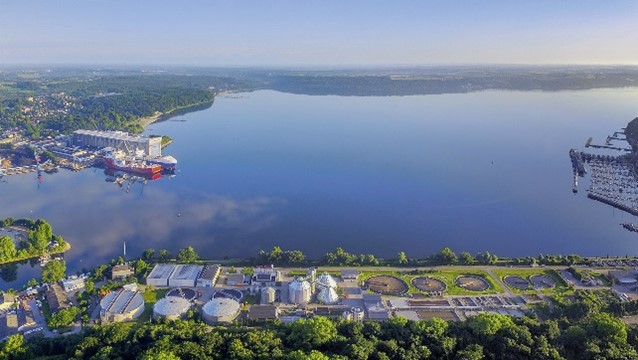Solution provider

Nitrous Oxide process sensor for online wastewater treatment optimization, low-cost greenhouse gas reduction, and reliable sustainability accounting.
Case
Wastewater treatment
Wastewater management


Nitrous Oxide process sensor for online wastewater treatment optimization, low-cost greenhouse gas reduction, and reliable sustainability accounting.
Add the case to your visit request and let us know that you are interested in visiting Denmark
Photo credit: Andreas Große
In 2022, the TBZ Flensburg wastewater treatment plant initiated a series of targeted measurement campaigns to identify the primary sources of nitrous oxide (N2O) emissions within their processes. This project aligns with the plant’s overarching goal of achieving climate neutrality.
N2O formation primarily occurs during the nitrification and denitrification stages, as a by-product of the biological conversion of nitrogen. Given that the Flensburg plant includes several steps that differ from conventional setups, the engineers strategically identified seven measurement points across plant sections involved in nitrogen degradation. This approach aimed to pinpoint specific sources and pathways of N2O emissions, thereby enabling more effective mitigation strategies.
The measurement campaigns, each lasting 1-2 weeks per location, were conducted from October 2022 to February 2023. The flexibility of using the Unisense Environment N2O Wastewater System at various measuring points was a significant advantage, as stored data could be transferred onto an USB for viewing and evaluation.
The results from the measurement campaigns indicated low N2O formation in the main stream and low to typical N2O formation in the side stream treatment. The results indicated low N2O levels however, two locations identified where N2O was formed. Given that N2O production often exhibits strong seasonal variations, it is crucial to monitor it over a year to obtain a comprehensive understanding.
In the future, N2O measurements will provide data for the Flensburg wastewater treatment plant’s CO2 equivalent accounting as part of their journey toward climate neutrality. The next steps for the N2O Wastewater System include integrating it into the process control system as well as potential usage for controlling carbon source dosing.
Furthermore, further insights into possible fluctuations in N2O formation through long-term monitoring at a designated measuring point will allow for implementation of countermeasures, aimed at enhancing the performance of the waste water treatment plant.
Featured image by: Andreas Große
